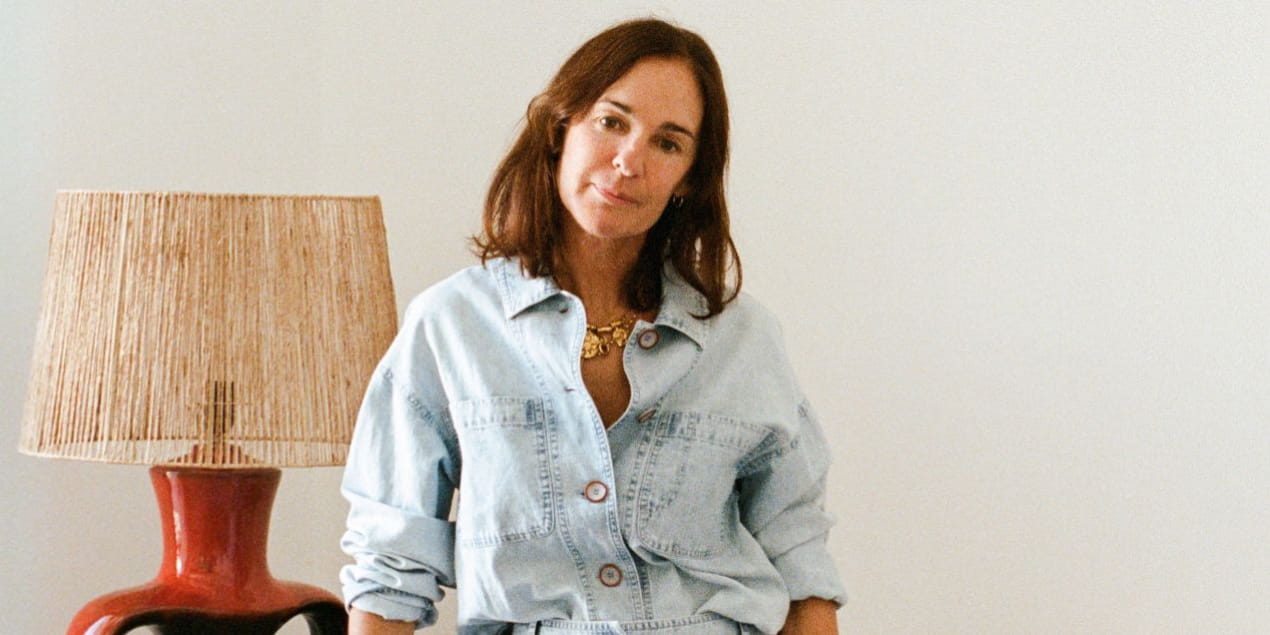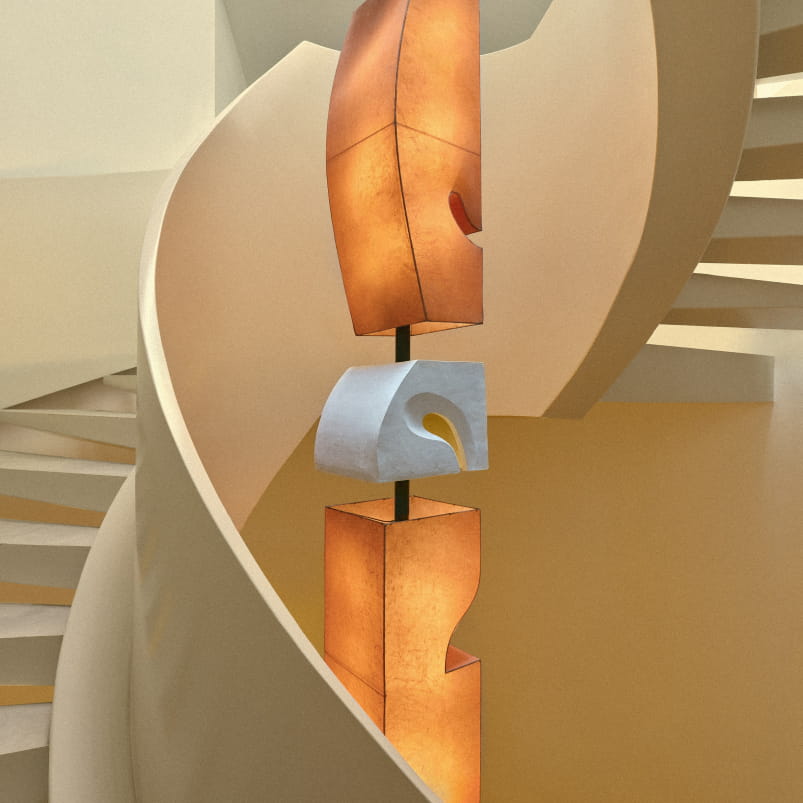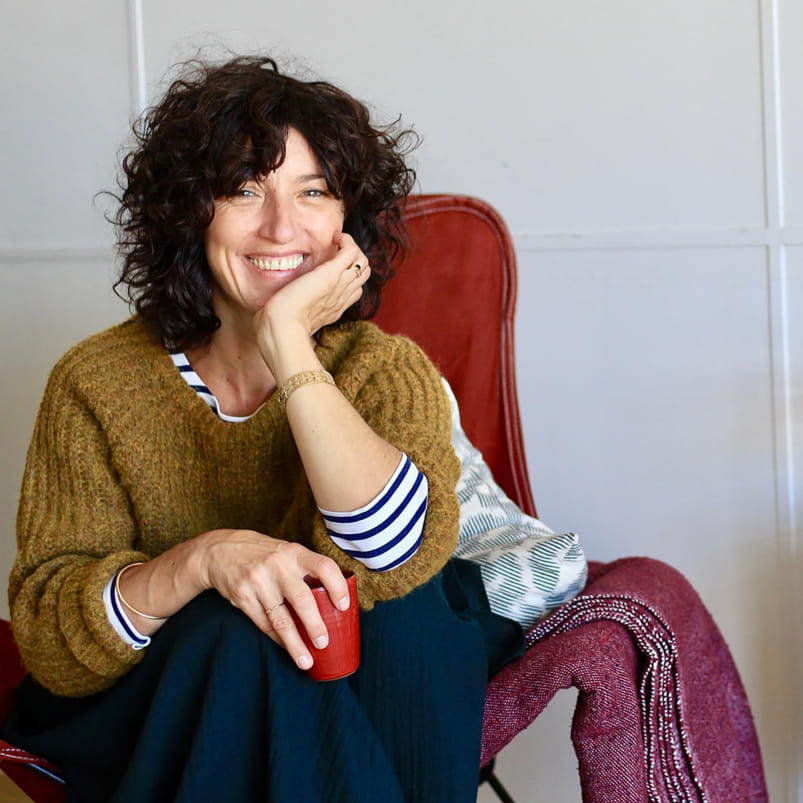Text : Sébastien Carayol Still-life photographs : Corinne Malet
Best described as a passionate globetrotter and anthropologist, a fashion designer with a strong sense of the past, a natural aesthete whose heart is her compass: these are the different aspects of life that have made Emma, the creator of Sessùn. Yet all these facets have one thing in common: a desire to experience different life encounters.
Human encounters but also more abstract interactions with matter, art, design and creativity in the widest possible sense; as vast as the distances that Emma has travelled around the globe.
Photography books, fiction and non- fiction, films, colours, records, gleaned from South America, Japan, Africa and Marseilles. What makes Emma tick, she who admits that she goes “crazy with excitement” when she goes into a museum bookstore?
To celebrate Sessùn’s 20th anniversary, instead of a straightforward biography, we have put together a collage made up of Emma’s own words. Here, we get a real sense of Emma’s thirst for discovery, a thirst that has informed some of her key pieces in fashion and design.


What inspires me? That’s complicated ... I’d say books first, all sorts of books, really. Besides books on photography and design, I love books that transport me back to my days as a student. I have loads of books on anthropology. Very academic and technically detailed books about the Zapoteca traditional dress, for example, or traditional Mayan dress, as worn in a specific region of Guatemala.
I also collect books on textiles. One of the most recent ones to have had a big impact on my visual imagination was African Textile (John Gillow, 2016). It looks back at the history of African weaving. It’s a stunning book that covers Central African weaving and also Moroccan weaving. In the same vein, I also love the book Rugs and weaving: the art of the Berber women of Morocco (Frederic Damgaard, 2009) and Marokko/Morocco mon amour (Kurt Rainer, 2005).
But let’s start back at the beginning. When I was 21 I travelled to Latin America for the very first time. I was a student and I went with two girlfriends in search of new experiences and encounters. At the time I was studying economics, not so much out of choice but more because I didn’t know what I wanted to do.
This trip came into being a er many months of planning; I had been toying with the idea for ages. The cartoon The Mysterious Cities of Gold definitely had a big early influence on me. It’s true! (laughing). When I was a teenager, I was already passionate about South American literature and magical realism. One hundred years of solitude (Gabriel García Márquez, 1967) had a huge impact on me. As did the work of Jorge Luis Borges, that I read from cover to cover in just a few weeks.
Then there was Frida Kahlo. I discovered her work, and it struck a chord deep inside of me. So I absolutely had to visit Coyoacán in Mexico, to see where she’d lived, her house, her paintings. Retrace her footsteps.
That first trip exceeded all my expectations. It was a complete revelation and, in some ways, literally changed my life! (Laughs) I fell in love with everything and everything inspired me: the colours, the landscapes, the local traditions, the craftsmanship...
From 1992 to 1999, other trips followed to Peru and Ecuador. At college, I also decided to specialise in economic anthropology, and focus my research on local craftsmanship. I wanted to learn about craft’s impact on the regional economy and was fascinated about what were then just the beginnings of the Fair Trade movement and ethical practises in business. I enrolled as a student at the Institut des Hautes Etudes d’Amérique Latine at the Sorbonne, on rue Saint Guillaume in Paris.
It was around that time that I also began buying books on ethnic textiles as well as books about photography by photographers such as Seydou Keïta & Malick Sidibé from Mali and Sergio Larraín from Chile. When we got back from our first trip, my two friends Alex and Vanska (see p. 30) and I came up with an idea: to nance our future trips we brought back a few bits and pieces to sell including trousers from Guatamala and crochet hats. These covered the costs of our first two trips, but I wasn’t satis ed with just that. I decided to design my own collection and go back to South America alone to have new pieces made.

This was when Sessùn first came into being, back in 1996. Those first pieces met with instant success. Although we were only talking about very small quantities, it was enough to make me realise that this was what I wanted to do. The first shops to stock my designs were mainly urban and streetwear outlets. So I found myself within the skateboard and surfing community, yet Sessùn offered a more feminine alternative to the traditional urban brands. In hindsight, I think that it was this unorthodox positioning that enabled the brand to take root and develop a loyal client base.
Whilst on my travels, I continued discovering new literary genres, including Japanese literature. Spring Snow by Yukio Mishima (1970) introduced me to the gracefulness of Japan and to japanese notions of peace, passing time and contemplation. It was this book that made me travel to Japan in 2003-2004. There, I discovered Japanese textiles and, in particular, their use of indigo. This paved the way for the Sessùn Blue collection, then the Indicrafts exhibition, both inspired by the color indigo. There is one book that is regarded as being the leading authority on the subject. It is called Indigo: The Colour that Changed the World by Catherine Legrand (2012).
All of the above-mentioned books have had an important influence on Sessùn’s creative being. Although novels may not create pictures or collections, they generate desire for exploration and sow the seeds of creativity.
But let’s get back to the chronology of events ... In 1997, I left university to fully commit myself to Sessùn, moving out of Paris and down to Marseilles where I opened the first Sessùn office. Soon, the collection had grown, and in 1999, following several unfulfilling trips to South America, I decided it was time to put away my backpack.
My sources of inspiration grew and expanded and the brand began to establish close ties with both the music scene and the arts. It was at around this time that I began working with the photographer, Laurent Richard. We both liked the same sepia tones seen in vintage American photos. We both adored William Eggleston’s photographs, as well as the work of Stephen Shore and Joel Meyerowitz. We also loved the beauty of vintage photos shot on lm such as Polaroid, Lomos or Dianas. The first Sessùn catalogues made a very direct reference to all that and, looked visually similar to those styles of photography.
2000 was marked by my discovery of design from the fifties and sixties, and in particular, Californian design. My first buy was a wicker chair by Janine Abraham, which has since become an iconic piece in our boutiques. To illustrate this, more books: Eames: Beautiful Details (Eames Demetrios, 2012) and Living in a Modern Way: Californian design 1930-1965 (Alison Kuhn, 2012). I also discovered Alexander Girard, who collaborated with Eames and was fascinated by Mexican culture. He is famous for his series of wooden dolls. He created a bridge between Mexican and modern design that had a massive impact on me. It was everything I loved! The book Alexander Girard by Todd Oldham & Kiera Coffee (2011) as well as his dolls, edited by Vitra, are stunning! These influences have defined Sessùn and the identity of our boutiques.


Either way, anything really can be a source of inspiration. For each collection we write one or more stories, primarily visual stories, a story in pictures. The starting point may sometimes only be one picture, one specific photograph. One image in particular comes to mind, a photograph by Joel Meyerowitz taken in New York. It is of a young woman in a pretty dress, standing at the foot of the Empire State Building. The colours were so powerful that they generated a whole story and collection.
The Lost tribes of Tierra del Fuego, a book of photographs by Martin Gusinde, (Editions Xavier Barral, 2015) inspired another story for a collection for Summer 2017. The book contains the photographic testimony of a priest in the early twentieth century who went to Tierra del Fuego to discover the culture of an Indian tribe. The Indians wore distinct tribal make-up yet dressed in the Western clothes of the early century: flannel and wool suits for the men and Victorian blouses for the women, accessorized with animal skins. This book really struck a chord and inspired me. For this is a subject that has fascinated me every since I was a young girl. My first interest in ethnic textiles goes back to westerns - cowboy clothes at first, men’s farming clothes, then Indian costumes as seen in the lm Little Big Man (Arthur Penn, 1970).
My grandfather and my parents were all seasoned filmgoers so my relationship with cinema started very young. Amongst all the films I watched I was also fascinated by, although not yet inspired by Hollywood in the 40’s and 50’s. This naturally led me, when I was about 15, to Italian cinema. I remember the first time I watched Antonioni’s film L’Avventura, and what a huge visual impact it had on me. My parents showed me films by Visconti, Fellini and Pasolini, and then soon moved on to the New Wave. Godard’s films with Anna Karina are an eternal source of inspiration. I first watched those films as a teenager, and then watched them a second time, in my late twenties, paying particular attention to the style of the era. This time I watched the films purely for visual reasons and to get inspired.
All of this has contributed to creating the Sessùn look. In each Sessùn collection there is always an ethnic element, but they is also always a reference to the cinema of the 60’s and New Wave. In addition to books, this very strong cinematic inspiration has also had an impact on my designs.
And then there is music. I also glean a lot of my creativity from music whether it be a record, a song, a record sleeve or a singer I love. Music isn’t just a series of tracks, it encapsulates a complete artistic manifesto, and, needless to say, plenty of emotion. The first names to come to mind, in no particular order are Cat Power, Patti Smith, David Bowie, the Stray Cats, Nancy Sinatra, Victoria Legrand from Beach House, the record sleeve Love Child (Diana Ross , Motown, 1963).
All my interests and obsessions are what make the Sessùn style, although the backbone of the brand remains an amazing story of chance encounters and friendships. I like to think that Sessùn wanders through all these sources of inspiration and picks up memories as you would on a journey; these are then pasted into a scrapbook to share with others. And to tell that story from one season to the next, designs rooted in our era, but not limited to it. A timeless love story where designing collections is simply a way to illustrate so many other aspects of life.





